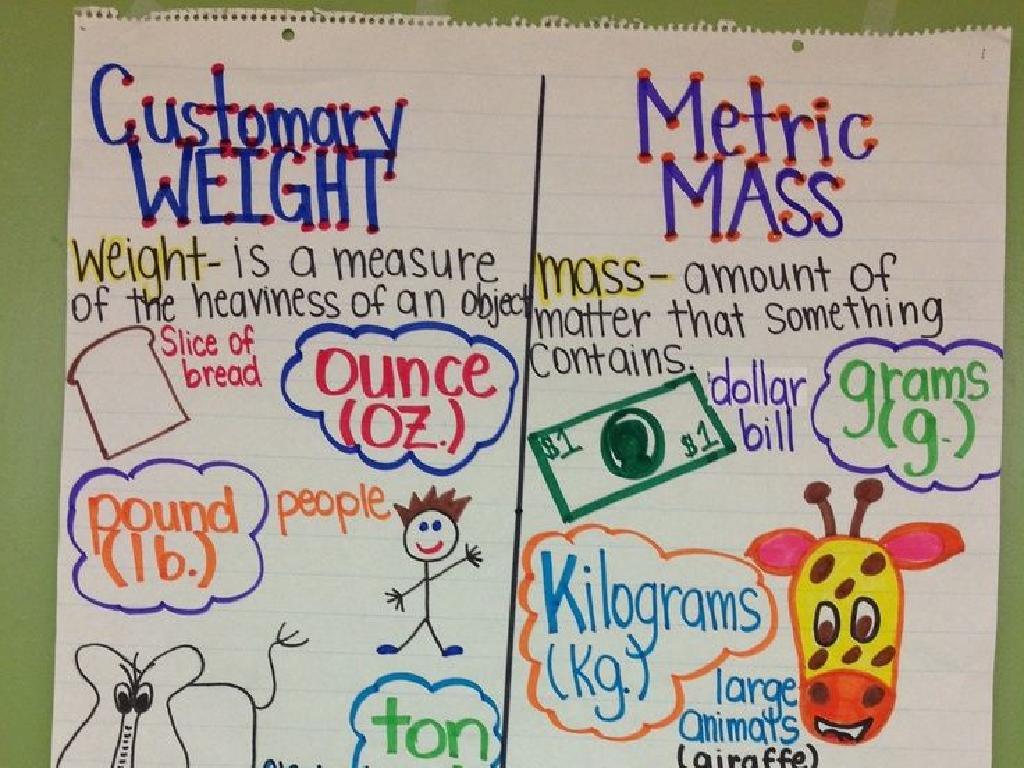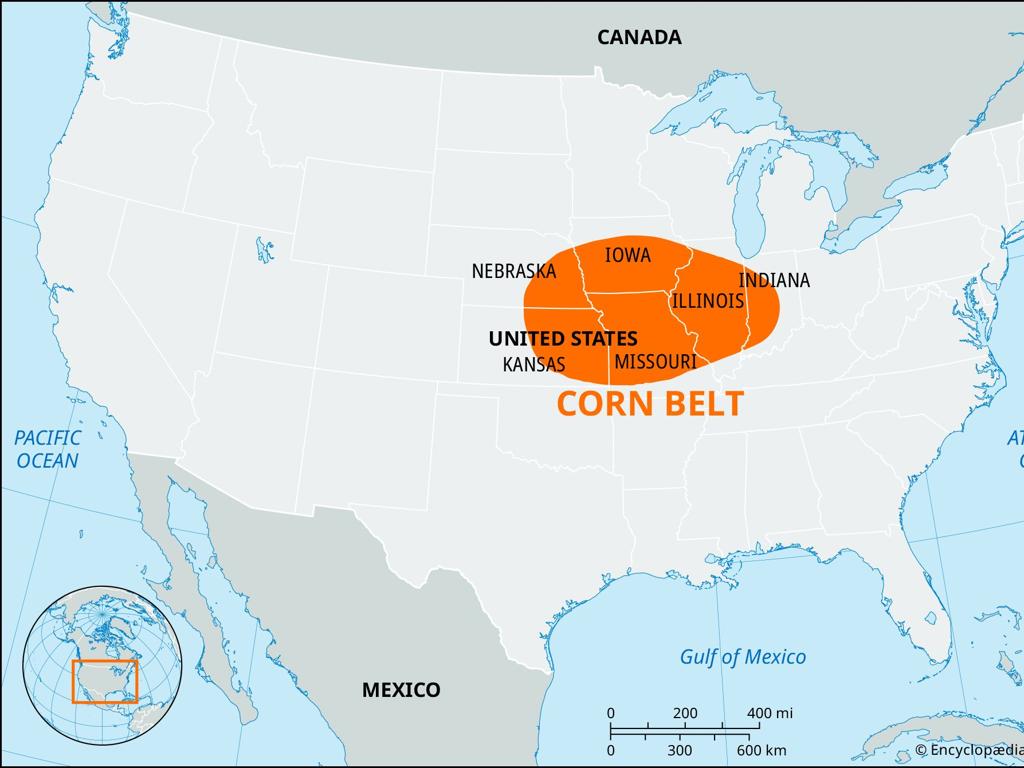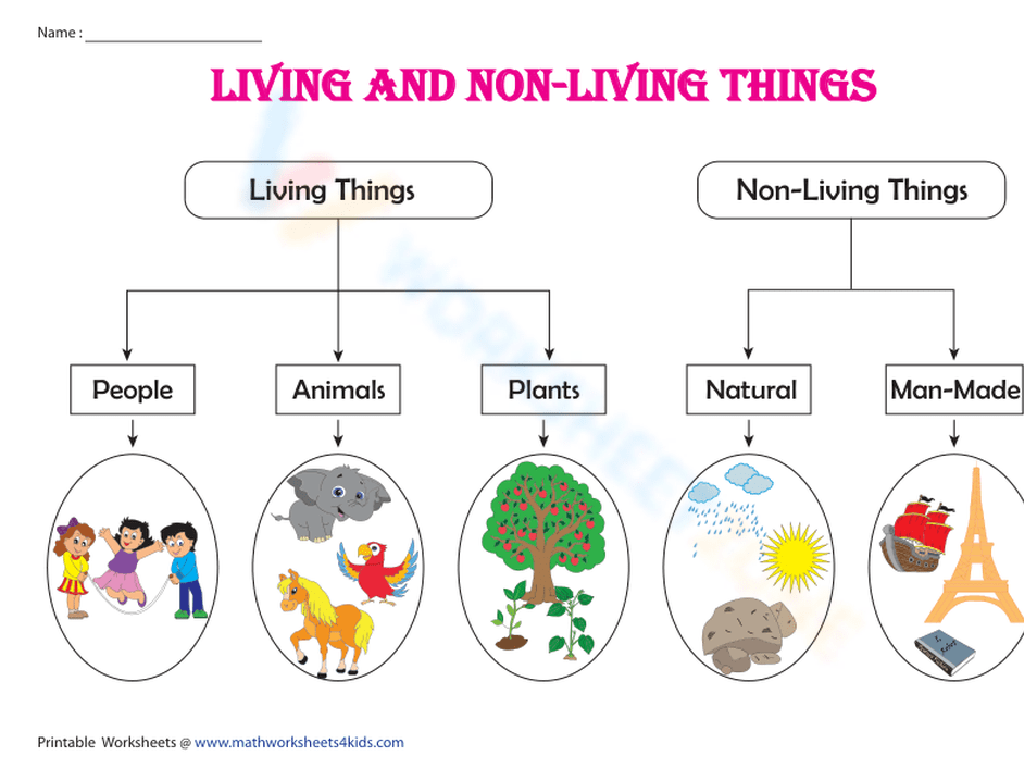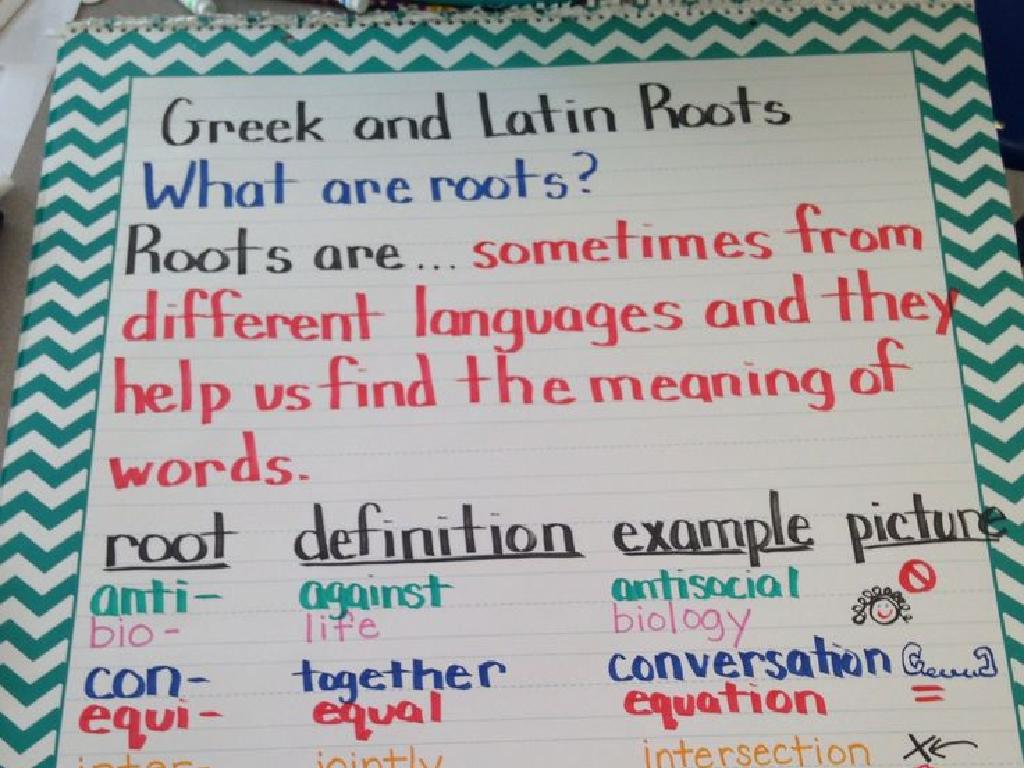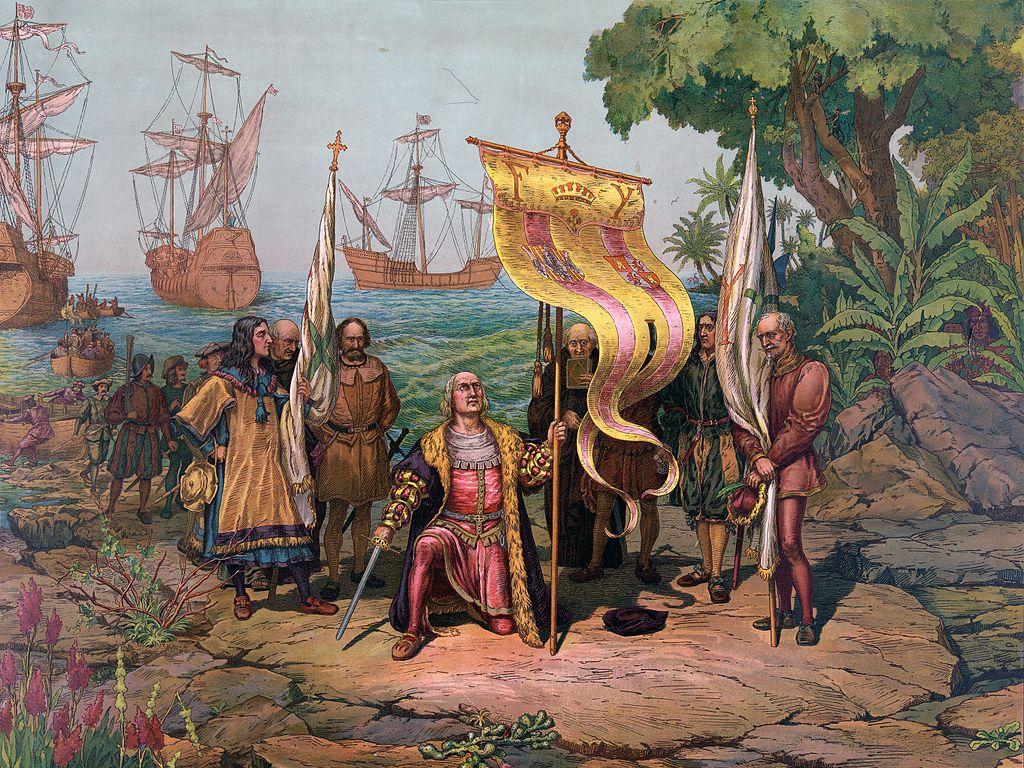Circles: Word Problems
Subject: Math
Grade: Seventh grade
Topic: Perimeter And Area
Please LOG IN to download the presentation. Access is available to registered users only.
View More Content
Exploring the World of Circles
– What is a circle?
– A round shape with all points equidistant from the center.
– Circles in daily life
– Wheels, clocks, and pizzas are circular.
– Perimeter of circles: Circumference
– Circumference is the distance around a circle, calculated as C = Àd or C = 2Àr.
– Area of circles
– Area is the space inside a circle, calculated as A = Àr².
|
Begin the lesson by defining a circle and discussing its unique properties, emphasizing that all points on the edge are equally distant from the center. Highlight the prevalence of circles in everyday life, such as in the design of wheels, clocks, and pizzas, to help students relate to the concept. Introduce the term ‘circumference’ as the perimeter of a circle and explain the formulas C = Àd (where d is the diameter) or C = 2Àr (where r is the radius). Then, discuss the concept of area as the space contained within a circle, using the formula A = Àr². Use visual aids to illustrate these concepts and provide examples for each formula. Encourage students to think of other circular objects and consider their circumference and area.
Understanding the Circle
– Circle: A round shape
– A circle is a shape with all points equidistant from the center
– Key components explained
– Center: circle’s middle point, Radius: line from center to edge, Diameter: line across circle through center, Circumference: distance around it
– Radius and diameter relationship
– Diameter is twice the length of the radius (D = 2r)
– Circumference: Perimeter of a circle
– Circumference is the total distance around the circle, calculated by C = Àd or C = 2Àr
|
Begin with the definition of a circle, emphasizing its symmetry and roundness. Introduce the key components such as the center, radius, diameter, and circumference, ensuring students understand each term’s meaning and how they relate to the circle itself. Highlight the relationship between the radius and diameter, which is foundational for solving problems related to circles. Explain that the circumference is akin to the perimeter but for circular shapes, and present the formulas for calculating it using either the diameter or the radius. Use diagrams to visually represent these concepts and provide examples for clarity.
Circumference of a Circle
– Circumference: Circle’s perimeter
– Circumference formulas
– Use C = 2Àr for radius, C = Àd for diameter
– Calculating circumference examples
– Example: Find circumference with r=4cm
– Practical applications
– Use to estimate fencing for a round garden
|
The circumference is the distance around the edge of a circle, analogous to the perimeter of a polygon. Introduce the formulas for circumference: C = 2Àr (using radius) and C = Àd (using diameter). Work through examples where students calculate the circumference given either the radius or diameter. Emphasize the practical applications of these calculations, such as determining the amount of material needed to encircle an object. Encourage students to think of real-world scenarios where they might need to calculate the circumference of circular objects.
Calculating the Area of a Circle
– Explore the concept of area
– Area is the space inside a circle’s boundary
– Learn the area formula A = Àr^2
– ‘A’ represents area, ‘À’ is Pi, and ‘r’ is radius
– Solve practice problems
– Use different circle measurements to practice
– Apply formula to real-world scenarios
– How much paint needed for a circular region?
|
This slide introduces the concept of area as it pertains to circles, ensuring students understand that it represents the space contained within the circle’s boundary. The key formula for calculating the area of a circle, A = Àr^2, is highlighted, with ‘A’ representing the area, ‘À’ as a constant (approximately 3.14), and ‘r’ as the radius of the circle. Students will engage with practice problems to apply the formula and reinforce their understanding. To connect the concept to real-world applications, consider discussing how to calculate the amount of paint needed to cover a circular region. Encourage students to think about how changing the radius affects the area, reinforcing the quadratic relationship between radius and area.
Solving Real-World Circumference Problems
– Apply circumference in real life
– Use circumference to find the distance around circular objects, like wheels or gardens.
– Steps to solve circumference problems
– Identify the radius or diameter, use the formula C = Àd or C = 2Àr, and calculate.
– Class practice: Solve together
– Example: Find the circumference of a bicycle wheel with a diameter of 20 inches.
|
This slide aims to help students apply their knowledge of circle circumference to solve problems they might encounter outside of the classroom. Begin by explaining how circumference is relevant in various real-world contexts, such as sports, construction, and daily life. Walk through the steps of solving a word problem: reading the problem carefully, identifying given information, selecting the appropriate formula, and performing the calculation. During class practice, present a sample problem and solve it as a class, ensuring to involve students in each step. This interactive approach will help solidify their understanding and prepare them for individual practice.
Word Problems: Area of Circles
– Practical applications of area
– Area calculations are used in fields like architecture and design.
– Walkthrough a sample problem
– Let’s calculate the area of a circular garden with a radius of 4 feet.
– Strategies for solving area problems
– Break down the problem, identify given values, and apply the formula A = Àr².
– Practice with diverse examples
|
This slide aims to help students apply their knowledge of circle areas to real-world problems. Start by discussing how area calculations are essential in various practical situations, such as planning a garden or designing a circular table. Provide a guided example, such as finding the area of a circular garden, to demonstrate the process step-by-step. Emphasize problem-solving strategies like understanding the question, identifying known values, and correctly applying the area formula. Encourage students to practice with a variety of problems to gain confidence. As an activity, students can measure circular objects around the classroom and calculate their areas.
Let’s Practice Together: Circle Word Problems
– Group activity: solve circle problems
Work in groups to find perimeter and area of circles.
– Individual work: complete assigned problems
– Share solutions with the class
Explain your methods and answer to the class.
– Discuss different problem-solving methods
Compare various strategies for solving circle problems.
|
This slide is designed to facilitate a collaborative and interactive learning experience. Begin with a group activity where students work together to solve problems related to the perimeter and area of circles. Provide a set of problems that vary in difficulty to cater to different skill levels within the group. After the group activity, assign individual work for students to complete on their own, ensuring they apply the concepts learned. Once everyone is done, create a sharing session where students present their solutions and the strategies they used. Encourage discussion on the different approaches to solving the problems, highlighting that there can be multiple ways to arrive at the correct answer. This will help students understand the material more deeply and learn from each other. For the teacher’s notes, include guidelines on how to facilitate group work, suggestions for problems to assign, and tips on encouraging a productive discussion among students.
Class Activity: Design Your Park
– Create a park with circular areas
– Calculate perimeter and area of circles
– Use formulas: Perimeter (Circumference) = 2Àr, Area = Àr²
– Include paths and green spaces
– Paths for walking, circles for greenery or attractions
– Consider park practicality
– Think about the usability and accessibility of spaces
|
In this engaging class activity, students will apply their knowledge of circles to a real-world scenario by designing a park. They will need to draw circular sections representing different areas of the park, such as flower beds, ponds, or play areas. Students should calculate the perimeter (circumference) and area for each circle using the formulas 2Àr and Àr², respectively. Encourage them to think about the layout and how paths will connect the spaces, as well as the practicality of the park for visitors. Possible activities: 1) Designing a park map, 2) Calculating costs for fencing around circular areas, 3) Planning a walking route with a specific distance, 4) Creating a scale model with paper and compass, 5) Researching plants suitable for circular flower beds.
Circles: Wrapping Up & Homework
– Recap circle definitions
– Review circumference and area
– Homework: Circle word problems
– Solve problems on finding perimeter and area of circles.
– Observe circles around you
– Find real-life circles and describe their significance.
|
As we conclude today’s lesson on circles, ensure students are clear on the key terms: radius, diameter, circumference, and area. For homework, students should complete a set of word problems that apply these concepts, reinforcing their understanding of how to calculate the perimeter (circumference) and area of circles. Encourage students to look for circles in their daily environment and think about their function or purpose. This will help them appreciate the relevance of geometry in the real world. In the next class, be prepared to discuss the homework problems and share the examples of circles students found. This activity will not only solidify their grasp of mathematical concepts but also enhance their observational skills.

